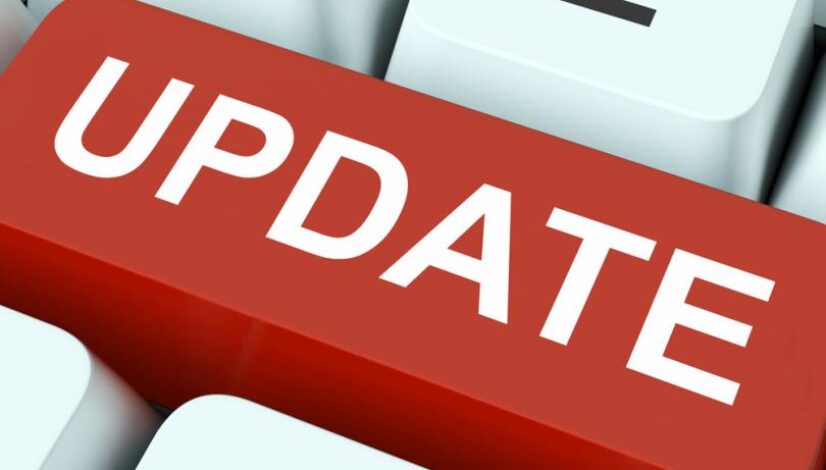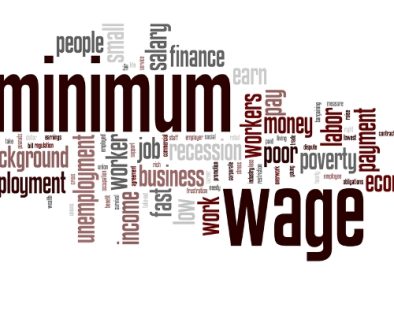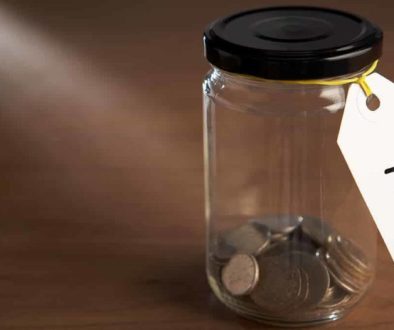JobKeeper 2.0 + More
JobKeeper 2.0 + More
On 29 June 2020, Treasury reported back to the Federal Government on its three-month review of the JobKeeper Payment (‘JKP’). Based on Treasury’s findings, the Government announced on 21 July 2020 that the JKP would be extended until 28 March 2021 (i.e., for a further six months beyond its original finish date of 27 September 2020).
From 28 September 2020, the JKP will be less generous and access to it will be more limited as businesses will be required to reapply the Decline in Turnover Test.
Under the current law, the Government only has the power to extend JKPs until 31 December 2020. This means the Coronavirus Economic Response Package (Payments and Benefits) Act 2020 will need to be amended. As Parliament does not resume until 24 August 2020, it is not expected that a Bill will be introduced before this time. Fortunately, JobKeeper 2.0 will not apply until the fortnight commencing 28 September 2020 and has no impact on the current JKP regime.
Along with the changes to the JKP, the Government also announced that there would be changes to the JobSeeker Payment and that the Coronavirus Supplement would be extended until 31 December 2020, albeit at a reduced rate.
On 23 July 2020, the Treasurer, Josh Frydenberg, released an Economic and Fiscal Update which contained further announcements in relation to the Early Access to Superannuation and the Supporting Trainees and Apprentices Measures.
Following is a summary of what JobKeeper 2.0 will look like, as well as an update on other COVID19 Measures.
-
JobKeeper 2.0
On 21 July 2020, Treasury released the fact sheet Extension of the JobKeeper Payment (refer below for link) setting out the details of JobKeeper 2.0, as follows:
JobKeeper Payments will now be payable until 28 March 2021
JKPs will now be made beyond 27 September 2020 with two separate extensions, being:
- Extension period 1 – which covers the seven JobKeeper fortnights that commence on 28 September 2020 and end on 3 January 2021; and
- Extension period 2 – which covers the JobKeeper fortnights that commence on 4 January 2021 and end on 28 March 2021.
Note: whilst employers will generally qualify for JKPs in the same way, it is important to note that they will need to separately satisfy a new Decline in Turnover Test for both Extension Period 1 and Extension Period 2. Refer below.
JKPs will now be made at two different rates
Where an employer, sole trader or an eligible entity with an eligible business participant (‘EBP’), qualifies for a JKP, they will either be paid at the:
- Full rate; or
- Reduced rate.
An employer will be paid at the full rate if, in the four weeks of pay periods before 1 March 2020, the employee was working in the business or not-for-profit for 20 hours or more a week on average.
A sole trader EBP, or an eligible entity with an EBP, will be paid at the full rate if the EBP was actively engaged in the business for 20 hours or more per week on average in the month of February 2020.
Where the employee (or EBP) did not achieve the 20-hour average, the JKP will be made at the reduced rate. However, the Commissioner will have a discretion to set out an alternative test where an employee’s or EBP’s hours were not usual during the February 2020 reference period.
Note: where the employer only qualifies for a JKP at the reduced rate, they only need to pay that reduced amount to the employee in order to satisfy the wage condition. The Treasury fact sheet also notes that the JKP will continue to be paid in arrears.
What are the two JobKeeper 2.0 rates?
As noted above, from the JobKeeper fortnight commencing 28 September 2020, JKPs will be made at two different rates (i.e., at the full rate or a reduced rate).
These rates will be fixed for all of Extension Period 1 but will be adjusted downward for Extension Period 2. Refer to the table below.
| Period | Full Rate | Reduced Rate |
| Extension Period 1 | $1,200 | $750 |
| Extension Period 2 | $1,000 | $650 |
What will JobKeeper 2.0 look like?
The following table sets out the full and reduced JKP rates for Extension Periods 1 and 2.
| Job Keeper 2.0 Payment Schedule | ||
| JobKeeper Extension Period 1 | ||
| JobKeeper Fortnight | Full rate | Reduced rate |
| 28 September 2020 – 11 October 2020 | $1,200 | $750 |
| 12 October 2020 – 25 October 2020 | $1,200 | $750 |
| 26 October 2020 – 8 November 2020 | $1,200 | $750 |
| 9 November 2020 – 22 November 2020 | $1,200 | $750 |
| 23 November 2020 – 6 December 2020 | $1,200 | $750 |
| 7 December 2020 – 20 December 2020 | $1,200 | $750 |
| 21 December 2020 – 3 January 2021 | $1,200 | $750 |
|
JobKeeper Extension Period 2 |
||
| 4 January 2021 – 17 January 2021 | $1,000 | $650 |
| 18 January 2021 – 31 January 2021 | $1,000 | $650 |
| 1 February 2021 – 14 February 2021 | $1,000 | $650 |
| 15 February 2020 – 28 February 2021 | $1,000 | $650 |
| 1 March 2021 – 14 March 2021 | $1,000 | $650 |
| 15 March 2021 – 28 March 2021 | $1,000 | $650 |
Re-satisfying the Decline in Turnover Test
Under the existing JobKeeper Scheme, an employer, a sole trader EBP or an eligible entity with an EBP was only required to satisfy the Decline in Turnover Test once in order to be entitled to all 13 JKPs from 30 March 2020 to 27 September 2020.
However, under JobKeeper 2.0, an employer, sole trader EBP or eligible entity with an EBP will not only have to satisfy this test a second time to be entitled to the seven JKPs in Extension Period 1, but will have to satisfy it a third time to be entitled to the six JKPs in Extension Period 2.
The applicable rate of decline in turnover required to qualify for JobKeeper 2.0 is determined in accordance with the existing rules (i.e., 50% for entities with an aggregated turnover of more than $1 billion, 30% for entities with an aggregated turnover of $1 billion or less and 15% for ACNCregistered charities). Note that, whilst the following discussion is focussed on entities with a required decline of 30%, the underlying principles apply equally to required declines of 50% or 15%.
Extension Period 1
For the purposes of being eligible for JKPs in Extension Period 1 (i.e., 28 September 2020 to 3 January 2021), an entity’s:
(a) actual GST Turnover for the June 2020 quarter must be at least 30% less than its GST turnover for the June 2019 quarter; and
(b) actual GST Turnover for the September 2020 quarter must be at least 30% less than its GST turnover for the September 2019 quarter.
Importantly, and unlike the existing JobKeeper Scheme, the decline in turnover calculations above are based on actual GST turnover. Further, it is important to note that both (a) and (b) must be satisfied. Therefore, if an entity already knows that their June 2020 quarter turnover declined by less than 30% compared to the June 2019 quarter, then it will not be eligible for any further JKPs in Extension Period 1 or 2. This is the case even if there is at least a 30% decline for the September quarter comparison.
Note: All turnover comparisons are made on a quarterly basis, i.e., there are no monthly comparisons under JobKeeper 2.0.
Extension Period 2
For the purposes of being eligible for JKPs in Extension Period 2 (i.e., 4 January 2021 to 28 March 2021), an entity’s:
(a) actual GST Turnover for the June 2020 quarter must be at least 30% less than its GST turnover for the June 2019 quarter;
(b) actual GST Turnover for the September 2020 quarter must be at least 30% less than its GST turnover for the September 2019 quarter; and
(c) actual GST Turnover for the December 2020 quarter must be at least 30% less than its GST turnover for the December 2019 quarter.
As can be seen, the fact that an entity was eligible for JKPs in Extension Period 1 does not mean it is automatically eligible to claim JKPs for Extension Period 2. To do so, it must make a further comparison of its GST Turnover for the December 2020 quarter (as per (c) above).
Also, if an entity was ineligible to claim JKPs for Extension Period 1, it is automatically ineligible to claim JKPs for Extension Period 2. This is the case even if there is at least a 30% decline for the December 2020 quarter comparison. This is because it does not satisfy paragraphs (a) and/or (b) above.
Note: The fact an employer, a sole trader EBP or an eligible entity with an EBP did not make a claim under the existing JobKeeper Scheme does not prevent it from commencing to claim under JobKeeper 2.0 (assuming it satisfies the relevant tests, including the new Decline in Turnover Test).
Alternative turnover tests
The Commissioner will be able to utilise his existing discretion to set out alternative turnover tests where the quarterly comparisons outlined above are not appropriate.
1.1 JobKeeper 2.0 and the Fair Work Act
As part of the existing JobKeeper Scheme, a number of amendments were made to the Fair Work Act 2009 (FWA) to allow employers to temporarily vary work arrangements. Currently, these arrangements are due to cease entirely on 28 September 2020.
Whilst Treasury has updated its JobKeeper Payment: Changes to the Fair Work Act fact sheet with a comment about the extension of the JobKeeper Scheme to 28 March 2021, there is, however, no indication that these FWA amendments will apply beyond their existing 28 September 2020 cessation date in order to mirror the extension to JKPs.
For more details
Please refer below for the links to the following Treasury facts sheets:
Extension of the JobKeeper Payment (21 July 2020)
https://treasury.gov.au/sites/default/files/2020-07/Fact_sheet-JobKeeper_Payment_extension_0.pdf
JobKeeper Payment: Changes to the Fair Work Act (21 July 2020) https://treasury.gov.au/sites/default/files/2020-07/Fact_sheet-Changes_to_Fair_Work_Act.pdf
-
Apprentices and Trainees
As part of the Government’s original COVID-19 Economic Response Package, it was announced that employers:
- with less than 20 employees; and
- with an apprentice or trainee who was in an Australian Apprenticeship as at 1 March 2020;
may be entitled to a subsidy equal to 50% of the apprentice’s or trainee’s wage that was paid during the period from 1 January 2020 to 30 September 2020, subject to a cap of $7,000 per quarter (i.e., $21,000 over the nine months).
Employers of any size, including Group Training Organisations, that re-engage an eligible out-oftrade apprentice or trainee are also eligible for the subsidy.
Changes announced in the Economic and Fiscal Update
In his Economic and Fiscal Update, the Treasurer announced the following changes to the Apprentices and Trainees wage subsidy:
- From 1 January 2020 to 30 June 2020, small businesses (with less than 20 employees) could claim the wage subsidy for apprentices or trainees who had been in-training with the business as at 1 March 2020.
- From 1 July 2020 to 31 March 2021, small and medium-sized businesses (with less than 200 employees) can claim the wage subsidy for apprentices or trainees who have been intraining with the business as at 1 July 2020.
The subsidy will continue to be 50% of the apprentice’s or trainee’s wages subject to the $7,000 per quarter cap. Employers of any size, including Group Training Organisations, that re-engage an eligible out-of-trade apprentice or trainee will continue to be eligible for the subsidy.
For more details Please refer below for the link to the following Treasury fact sheet:
Supporting apprentices and trainees (21 July 2020) https://treasury.gov.au/sites/default/files/2020-07/fact_sheetsupporting_apprentices_and_trainees_0.pdf
-
JobSeeker Payment
On 20 March 2020, Newstart Allowance was re-branded as the JobSeeker Payment (‘JSP’). Then, as part of its original COVID-19 Economic Response Package, the Government announced that the JSP would be increased by a new temporary Coronavirus Supplement of $550 per fortnight commencing from 27 April 2020. The Coronavirus Supplement was to remain in place until 24 September 2020.
Recipients of other support payments, such as Youth Allowance and Austudy, were also eligible to receive the new $550 Coronavirus Supplement.
A number of other concessions were offered such as a waiver on asset testing, the liquid assets waiting period and the ordinary waiting period.
Changes announced to the Coronavirus supplement
The Government recently announced the following changes in relation to the Coronavirus Supplement:
- The Coronavirus Supplement will continue to be paid to eligible income recipients until 31 December 2020.
- after 25 September 2020, the Coronavirus Supplement will be $250 per fortnight (reduced from $550).
- as of 25 September 2020 to 31 December 2020, recipients of JSP and Youth Allowance (other) will be able to earn up to $300 per fortnight (up from $106 and $143 respectively) without affecting their entitlements. – both payments will taper at 60 cents for every $1 above $300 per fortnight.
- From 25 September 2020, the asset test will be reinstated for new and existing recipients and the liquid assets waiting period test will be re-instated for new recipients. The ordinary waiting period will continue to be waived until 31 December 2020.
- From 25 September 2020, the partner income test cut-out will increase to $3,086.11 per fortnight (i.e., $80,238.89 per year) for individuals with no personal income but the taper rate will increase from 25 cents to 27 cents (however, no one will be worse off).
- Jobseekers’ mutual obligation requirements were gradually reintroduced from 9 June 2020 (after having been suspended from 24 March 2020 until 8 June 2020).
For more details
Please refer below for the link to the following Treasury fact sheet:
Extension of additional income support for individuals (21 July 2020) https://treasury.gov.au/sites/default/files/2020-07/Fact_sheet-Income_Support_for_Individuals_1.pdf
-
Delivering support for business investment
As part of its initial economic response package, the Government introduced two business investment measures, as follows:
- Greater access to the instant asset write-off (‘IAWO’) by:
– increasing the write-off threshold to $150,000 (up from $30,000); and
– making the write-off available to businesses with a turnover of less than $500 million (up from $50 million);
for depreciating assets first used (or installed ready for use) on or after 12 March 2020 and before 1 July 2020.
- Accelerating depreciation deductions by broadly allowing, for new depreciating assets purchased on or after 12 March 2020 and first used (or installed ready for use) on or after 12 March 2020 and before 1 July 2021:
(a) businesses with a turnover of less than $500 million (and at least $10 million) to claim an immediate up-front deduction equal to 50% of the cost of the asset and to claim the remaining 50% over the asset’s effective life; and
(b) businesses with a turnover of less than $10 million (that use the simplified depreciation rules) to claim an immediate up-front deduction equal to 57.5% of the asset’s cost and to claim the remaining balance in the following years as part of the small business pool. If the business does not use the simplified depreciation rules, refer to (a) above.
IAWO $150,000 threshold extended to 31 December 2020
In a Press Release dated 9 June 2020, the Treasurer announced that the IAWO would be extended by six months to 31 December 2020.
No change to accelerated depreciation deductions
This measure will continue to operate as originally enacted.
For more details Please refer below for the link to the following Treasury fact sheet.
Delivering support for business investment (21 July 2020) https://treasury.gov.au/sites/default/files/2020-07/Fact_SheetDelivering_support_for_business_investment_0.pdf
-
Early access to Super
One aspect of the Government’s Economic Reform Package was to allow individuals to withdraw up to $20,000 (tax-free) from their superannuation funds, subject to meeting certain conditions. Eligible individuals were able to make one lump sum withdrawal of up to $10,000 in the 2020 income year (i.e., by 30 June 2020) and another lump sum withdrawal of up to $10,000 in the 2021 income year (but not later than 24 September 2020).
Access extended to 31 December 2020
As part of its Economic and Fiscal Update, the Government announced that individuals will now have until 31 December 2020 (rather than 24 September 2020) to apply for an early release of super.
For more details
Please refer below for the link to the following Treasury fact sheet.
Early access to superannuation (23 July 2020)
https://treasury.gov.au/sites/default/files/2020-07/Fact_sheet-Early_Access_to_Super_0.pdf
-
Supporting the flow of credit
To assist small and medium sized businesses (i.e., those with a turnover of up to $50 million) gain access to working capital, the Government introduced the Coronavirus SME Guarantee Scheme whereby it would guarantee 50% of the amount of new loans made up until 30 September 2020.
To be eligible for the guarantee, such loans:
- are capped at $250,000 per borrower;
- can have a term of up to three years with an initial six-month repayment holiday; and
- have to be unsecured.
Government extends SME Guarantee Scheme until 30 June 2021
From 1 October 2020, eligible lenders will be able to offer loans on the same terms as the current Scheme with the following enhancements:
- The maximum size of the loans will be increased to $1 million per borrower.
- can be up to five years (rather than three years) and whether there will be a six-month repayment holiday will be at the discretion of the lender.
- They can be used for a broader range of business purposes, including to support investment.
- Loans can be either unsecured or secured (excluding commercial or residential property).
For more details
Please refer below for the link to the following Treasury fact sheet.
Coronavirus SME Guarantee Scheme – supporting the flow of credit (21 July 2020)
https://treasury.gov.au/sites/default/files/2020-07/Fact_sheet-Supporting_the_flow_of_credit_0.pdf
-
Homebuilder
On 4 June 2020, the Government announced it was introducing the HomeBuilder Scheme. Under this scheme, eligible owner-occupiers are able to receive a grant of $25,000 to build a new home or substantially renovate an existing one. The contract must be signed between 4 June 2020 and 31 December 2020 and construction must have commenced within three months of the contract date.
HomeBuilder will be implemented via a National Partnership Agreement with State and Territory Governments. This approach will utilise existing State and Territory mechanisms to distribute the HomeBuilder payments. Information on when and how to access HomeBuilder will become available through the relevant State or Territory.
On 23 July 2020, the Government released a Frequently Asked Questions fact sheet dealing with the application process, eligibility criteria, new builds and substantial renovations.
For more details
Please refer below for the links to the following Treasury fact sheets.
Homebuilder (18 June 2020)
https://treasury.gov.au/sites/default/files/2020-06/Fact_sheet_HomeBuilder_0.pdf
Homebuilder FAQs (23 July 2020)
https://treasury.gov.au/sites/default/files/2020-07/HomeBuilder_Frequently_asked_questions_0.pdf
Our team at Gerard Wilkes & Associates are here to help. If you have any questions regarding this article, or would like to discuss your taxation matters further, please contact us at https://www.wilkes.com.au/contact-us/ or call our office 07 5532 1733.
Article Referenced from: National Tax & Accountants’ Association Ltd (NTAA)




